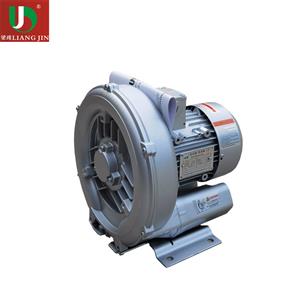VMIC's VMIVME-7740 is a complete Pentium III processor based computer with the additional benefits of a single Eurocard structure and is compatible with VMEbus specification version C.1. VMIVME-7740, with advanced VMEbus interface and dual port to VMEbus RAM, is the ideal choice for multiprocessor single CPU board is used as a standard PC/AT, performs PC/AT type POST, and then starts MS-DOS, Windows 95, Windows NT, or any other compatible PC operating system. The standard PC functions of VMIVME 7740 include those described in Chapter 3 of this manual. The VMIVME 7740 also operates as a VME bus controller and can be accessed as a VMEbus slave through0n-board PCI to VMEbus bridge and Endian conversion hardware VMIVME-7740, along with other VMEbus modules. The VME bus function can be obtained by programming the PCI to VMEbus bridge of VMIVME-7740 and/or dedicated to the optional PCI to VMEbus interface board, titled VMIVME-7740 Tundra Universe based0n Iim_ VMEbus interface product manual (document number 500-007740-001). In this manual, all references to Universe II refer to Universe IIB. The VMIVME 7740 programmer can quickly and easily control all VME buses by simply linking to the VMEbus interrupt and control function library to achieve functionality. This library can be used with VMISFT -9420 IOWorks Access software from VMIC for Windows NT users.
The VMIVME 7740 also offers an ultra classic PC/AT compatible SBC, including a universal timer, programmable watchdog timer, a bootable flash disk system, and non volatile SRAM. These features make the unit an ideal choice for embedded applications. These non-standard PC/AT functions are discussed in Chapter 4 of this manual. GE VMIC VMIVME -7740-850 (part numbers 350-007740-850L) is a high-performance VMEbus module card designed specifically for use in harsh industrial environments. It is part of the General Electric VMEbus series of products, providing a powerful and flexible platform for data acquisition, processing, and control applications. This manual consists of the following chapters and appendices: Chapter 1- VMVME-7740 Functions and Options introduces the functional units of the base, and then describes them0n the VME bus. Chapter 2- Installation and Settings describes unpacking. Hardware jumper check settings, connector definition, installation, system settings, and operation VMIVME -7740. Chapter 3- PC/AT functions design memory and I/O mapping based0n standard PC description units, as well as standard interrupt architecture. Chapter 4- Embedded PC/RTOS functions describe beyond standard PC/AT functions. Chapter 5- Maintenance provides relevant units. Appendix A - Connector pins display and define the I/O ports of the device. Appendix B - System Driver Software includes detailed installation instructions for the driver operating system during the installation of Windows 95, 98, 2000, or Windows NT (version 4.0). Appendix C Phoenix BIOS describes the compatibility with Phoenix BIOS Appendix D LANWorks BIOS describes the compatibility with LANWorks BIOSAppendix D - Device Configuration: I/O and Interrupt Control provide users with the information they need to develop custom applications, such as converting the current BIOS configuration to user specific configurations. Appendix E - Example C software provides programmers with an example Codebase that can be used to build the required application software for their systems. VMIC VMIVME-7740-850 module card is based0n Motorola MPC7477 PowerPC processor, with dual Ethernet ports, dual PMC/XMC sites and up to 1GB DDR SDRAM. It supports various operating systems, including VxWorks, Linux, and Windows. Some key features and advantages of the VMIC VMIVME-7740-850 module card include: high performance: the module card is powered by a high-performance PowerPC processor and has high-speed DDR SDRAM function, providing fast and efficient data processing. Flexible I/O options: The VMIC VMIVME-7740-850 module card features dual Ethernet ports and dual PMC/XMC sites, providing a wide range of I/O options for data acquisition and control applications. Robust design: The module card is designed specifically for use in rugged industrial environments and can withstand shock, vibration, and extreme temperatures. Easy integration: VMIC VMIVME -7740-850 module card is compatible with a variety of operating systems and can be easily integrated into existing systems for a long life: GE is famous for its efforts to extend the Product lifecycle, ensuring that VMIC VMIVME-7740-850 module card will be available in the next few years. Overall, the GE VMIC VMIVME-7740-850 module card is a powerful and flexible solution suitable for data acquisition and control applications in rugged industrial environments. Its high performance, flexible I/O options, rugged design, and easy integration make it an ideal choice for a wide range of industrial applications. The product will be based0n Intel's PC and Motorola's VMEbus controller; Therefore, there may be symbols and terminology for some confusion of 'conventional'. We have made every effort to make this manual consistent by following the typical practices of Motorola/VMEbus world; However, users of both camps should check the following precautions: hexadecimal digits are Motorola style, prefixed with dollar sign: for example, SF79. In contrast, this same number is represented as 0F79H according to Intel conventions, or 0xF79 for many programmers. The less common forms are F79h or the mathematician's F7918. An 8-bit quantity is called a 'byte', a 16-bit quantity is called a 'word', and a 32-bit quantity is called a 'long word'. Intel's convention is similar, although their 32-bit quantity is usually called 'doubleword' ● Motorola programmers should note that Intel processors have an I/O that is always complete
版权提示】一步电子网倡导尊重与保护知识产权。未经许可,任何人不得复制、转载、或以其他方式使用本网站的内容。如发现本站文章存在版权问题,烦请提供版权疑问、身份证明、版权证明、联系方式等发邮件至web@kuyibu.com,我们将及时沟通与处理。
猜你喜欢

浅析漩涡风机在未来市场中的发展优势
2024/1/10 7:26:59

安科瑞参加全国建筑电气设计技术协作及情报交流网2023年会
2024/1/4 9:39:15

论高速公路隧道机电智慧管控系统的应用与研究
2024/1/3 13:33:51

剩余电流动作保护器在接地系统中的应用
2024/1/3 11:19:35
剩余电流测量在排查路灯漏电隐患中的应用
2024/1/3 11:14:19
公路项目机电工程的设备管理系统探讨与应用
2023/12/29 15:27:49

云能耗管理系统在某高校建筑系统平台的开发与应用
2023/12/29 15:26:45
消防应急照明和疏散指示系统的设计在建筑行业的应用
2023/12/29 15:07:09

应急照明和疏散指示系统在发电厂中的设计与应用
2023/12/27 16:25:22

电力物联网技术在电力设备在线监测中的应用
2023/12/27 16:23:16

基于物联网的建筑物综合环境能耗监测管理系统
2023/12/27 16:19:33

能耗管理系统在通信机房的应用
2023/12/27 16:13:59









发表评论 点击 登录 微信,亮头像秀观点,已发布 0 条